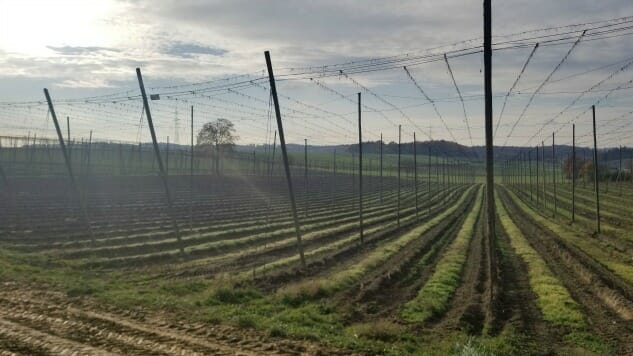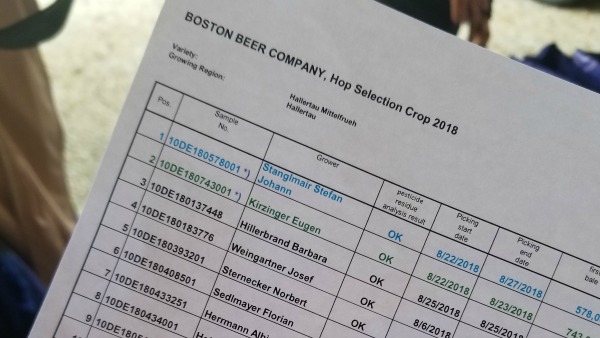What It’s Like to Select Hops With Jim Koch from Sam Adams

The first thing you notice when driving into the Halleratu region of Germany is the hops, or the hop fields in my case.
In early November, I traveled to Bavaria with the team from Sam Adams. Our mission: to select the hops for Sam Adam’s iconic Boston Lager.
Sam Adam’s founder Jim Koch has been coming to the region to do hop selection for the beer for 32 years, a move that’s become unique in the brewing industry.
“My Dad was a brewmaster and he said ‘You’ve gotta do it.’ You have to select because you’re going to get differences,” Koch tells me between inspecting handfuls of hops. “The hop dealer will aggregate, so you’ll get average. But, if you pick the best from that aggregate, you’ll get higher quality, more intense flavor in the beer, better bitterness.”
Over several days, Koch and his team inspect lot after lot of hops, all with the mission of finding the perfect hops for the brewery’s Boston Lager.
“Breweries used to do it all the time. Now it’s become more industrial, it’s been monetized,” says Koch. “The industrial brewers only buy alpha acids. They buy kids of alpha, they don’t care about the aroma. When you’re buying that way you don’t evaluate”
That evaluation is interesting to watch, and a lot more difficult than you might think.

Sam Adams founder Jim Koch with hops
All of Sam Adams’ hops are curated by Stanglmair farms. The farm has been operating in some capacity since 1722 as a hop farm and now the majority of its yearly harvest goes to Sam Adams. Stefan Stanglmair also works with local farmers that grow hops for the brewery, and the rest of those hops are presented to Sam Adams each November for hop selection.
During the selection, hops are laid out by harvest and farmer on blue paper. Brewers inspect the hops, and pick up a handful of each, rub that handful between their hands, and then smell the oils left behind on their hands. Think of it as a hop hand wash, except you’ll need a special soap afterward to get everything off (regular soap and water is no match for hop oil).
During that process they’re inspecting the hops, looking for damage from weather and insects, and judging each harvest’s aroma, looking for the perfect match for their beer. They’re also looking to purchase hop lots that will complement each other. Each individual hop harvest is then given a score.

